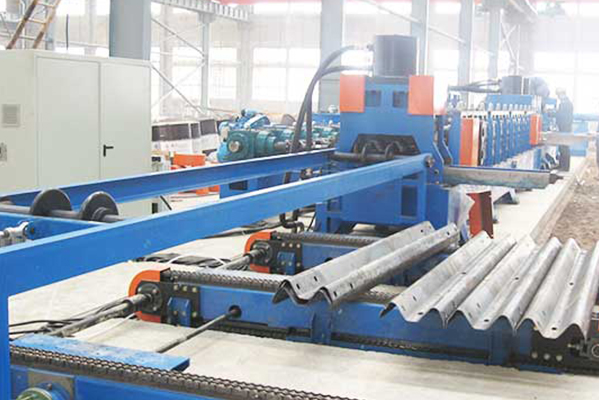Navigation Menu
Contact Us
- Email:
- info@wxavatar.com
- Address:
- Yurong Village, Yuqi Street, Huishan District, Wuxi, China.
Release Date:May 27, 2025 Visit:46 Source:Roll Forming Machine Factory
The guardrail manufacturing industry has seen significant advancements in production techniques, with modern roll forming technology playing a key role in improving efficiency. Guardrail roll forming machines have become essential in meeting the growing demand for high-quality, durable guardrails used in highways, bridges, and industrial facilities. This article explores how modern roll forming technology enhances production efficiency while maintaining product consistency and reliability.

1. High-Speed Production Capabilities
Modern guardrail roll forming machines are designed for continuous, high-speed production, significantly reducing manufacturing time compared to traditional methods. These machines can process metal coils into finished guardrail profiles in a single pass, minimizing downtime between production stages. The automated nature of roll forming ensures consistent output while maintaining tight tolerances, allowing manufacturers to meet large-scale project requirements efficiently.
2. Precision and Consistency in Guardrail Manufacturing
Guardrail roll forming machines utilize advanced CNC controls and precision tooling to produce uniform guardrail profiles with minimal variation. Each section maintains exact dimensions, ensuring compatibility during installation. This level of consistency reduces material waste and eliminates the need for extensive post-production adjustments, streamlining the overall manufacturing process.
3. Reduced Material Waste and Cost Savings
Roll forming technology optimizes material usage by shaping metal coils with minimal scrap. Unlike cutting or stamping methods, which may generate excess waste, roll forming progressively forms the guardrail profile without compromising structural integrity. This efficiency leads to cost savings in raw materials and reduces disposal expenses, making production more economical.
4. Flexibility in Guardrail Design
Modern roll forming machines can be adjusted to produce various guardrail profiles, including different heights, thicknesses, and corrugation patterns. Quick tooling changes allow manufacturers to switch between designs without significant downtime, making it easier to meet diverse customer specifications. This adaptability is particularly beneficial for projects requiring customized guardrail solutions.
5. Improved Strength and Durability
The roll forming process work-hardens the metal, enhancing the structural strength of guardrails. The continuous bending and shaping create a more resilient product capable of withstanding impact and environmental stress. As a result, guardrails produced using roll forming technology often exhibit greater longevity and reliability.
6. Integration with Automated Systems
Many guardrail roll forming machines now feature automated feeding, cutting, and stacking systems, further enhancing production efficiency. These integrations reduce manual labor requirements while increasing output speed and accuracy. Automated quality control systems can also detect defects early, ensuring only high-quality guardrails proceed to finishing stages.
Conclusion
Modern roll forming technology has revolutionized guardrail production by improving speed, precision, and cost-efficiency. Guardrail roll forming machines enable manufacturers to meet industry demands while maintaining high-quality standards. As technology continues to evolve, further advancements in automation and material utilization will likely enhance production capabilities even more.

For manufacturers looking to optimize their guardrail production processes, investing in advanced roll forming machinery offers a reliable solution for achieving greater efficiency and product consistency.